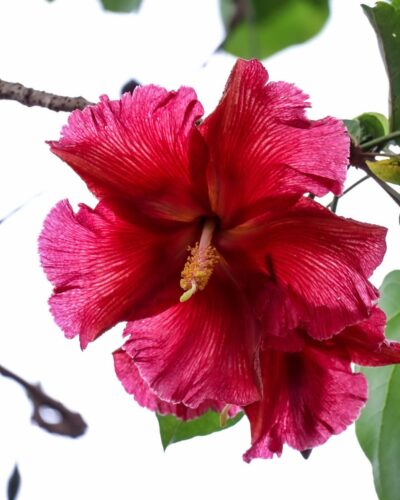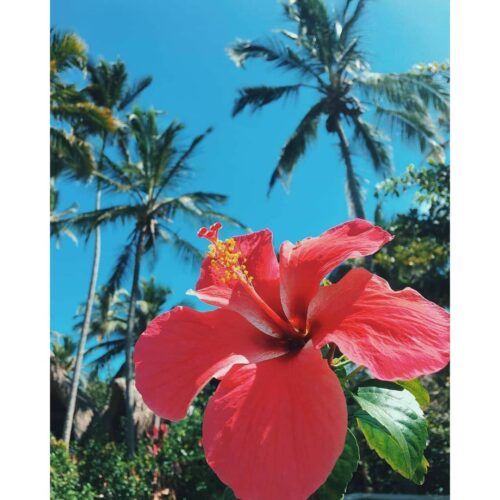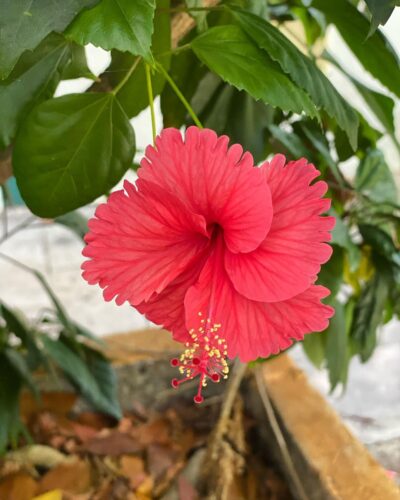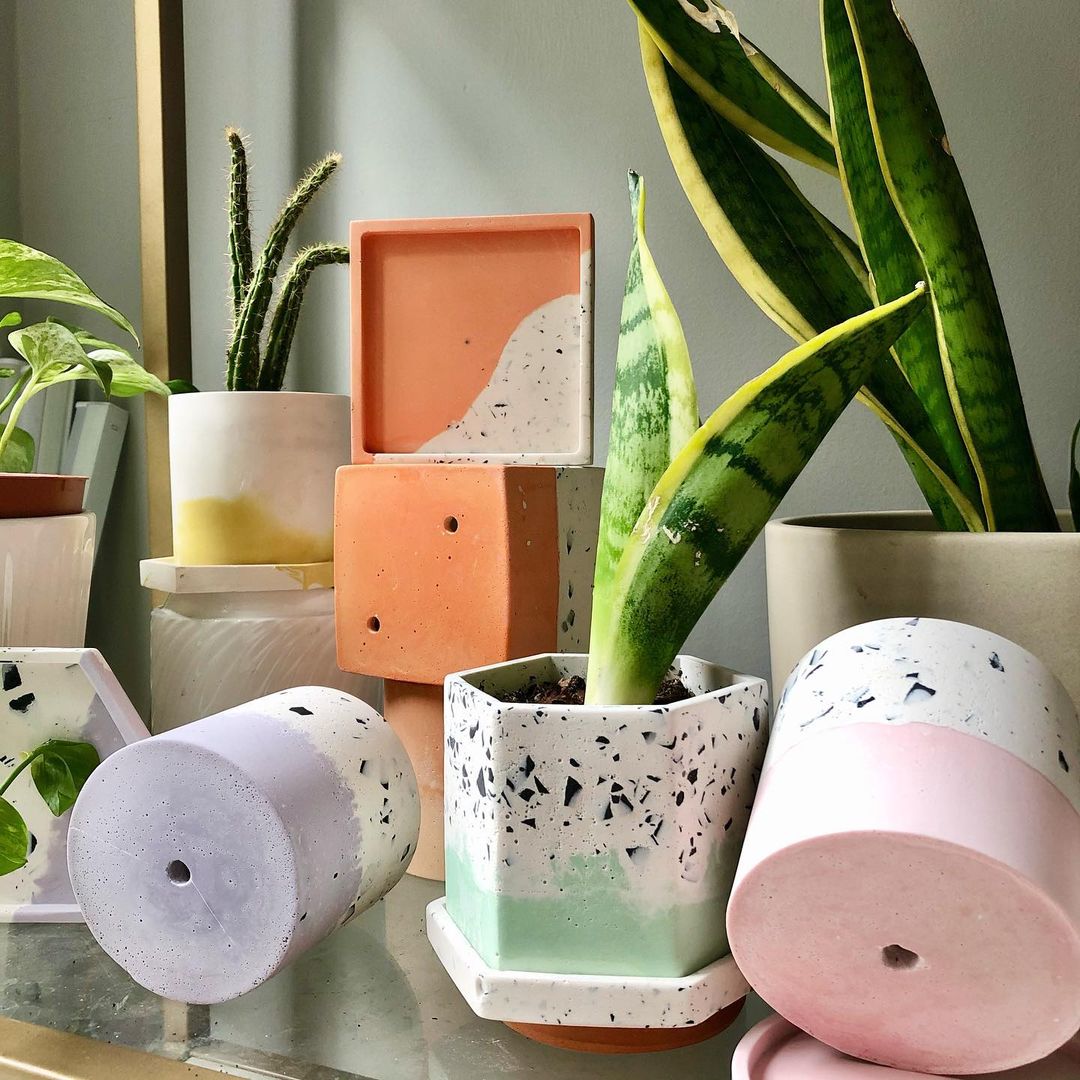Explore this Puerto Rico National Flower: Facts, Uses, and Growing Guide for adding this vibrant specimen to your garden.
Discover the beauty of Puerto Rico’s national flower, symbolizing the island’s vibrant culture. In this guide, you can discover Puerto Rico National Flower: Facts, Uses, and Growing Guide for this symbolic blossom. Dive into the world of Puerto Rico’s national flower with us.
Read about Texas Star Hibiscus Growing Information
Puerto Rico National Flower Information

National Flower of Puerto Rico: The Maga Flower
Common Names: Maga Tree in English, Flor de Maga, and Maga Colorada in Spanish, Puerto Rican hibiscus
Family: The Maga flower (Thespesia grandiflora) belongs to the family Malvaceae, which is the same family as the hibiscus and cotton plants.
Native Place: The Maga flower is native to Puerto Rico, making it a symbol of the island’s natural beauty.
Origin: The Maga flower’s name is derived from the Tagalog word “maga,” which means “beautiful.” It is believed to have been introduced to Puerto Rico by the Spanish during colonial times, and it has since become an integral part of the island’s natural heritage.
Appearance: This beautiful flower is large and showy, with petals ranging in color from deep pink to reddish-orange. It has a tropical and exotic appearance that adds to its allure.
Height: It can reach up to 65 feet tall with a diameter of 20 inches in its natural habitat.
Blooming Season: The Maga flower typically blooms during the warm and humid summer months in Puerto Rico, from June to September.
Fragrance: Maga flowers have a sweet and pleasant fragrance.
Significance: The Maga flower holds significant cultural and historical importance in Puerto Rico. It is not only the national flower but also a symbol of the island’s vibrant flora. The flower’s vibrant colors and unique beauty reflect the spirit and resilience of the Puerto Rican people.
Discover Roselle Plant Benefits and Uses
Designation as the National Flower
The Maga flower was officially designated as the national flower of Puerto Rico through legislative action in 1937. The primary reason for designating the Maga flower as Puerto Rico’s national flower was to pay tribute to the island’s exquisite natural beauty and to symbolize its distinct cultural identity. This flower is not merely an iconic emblem of Puerto Rico; it also carries deep significance in local folklore and traditions.
Advantages and Role of Puerto Rico National Flower in the Ecological World
1. Pollinator Attraction: The vibrant and colorful Maga flower plays a crucial role in attracting pollinators like bees, butterflies, and hummingbirds. These pollinators help reproduce not only the Maga itself but also other plant species, contributing to the overall biodiversity of the region.
2. Biodiversity Support: As an integral part of Puerto Rico’s ecosystem, the Maga flower provides nectar and pollen to a wide variety of pollinators. This, in turn, supports the diversity of local flora and fauna by promoting the growth of other native plants.
3. Erosion Control: The Maga’s extensive root system helps in preventing soil erosion, particularly in regions prone to heavy rainfall and hurricanes. This stabilizes the soil and protects the natural habitats of many other species.
4. Habitat Creation: The Puerto Rico National Flower creates suitable habitats for small insects and arthropods, which are essential in the food chain. Birds and other wildlife depend on these insects as a food source.
5. Carbon Sequestration: Like many plants, Maga flowers contribute to carbon sequestration by absorbing carbon dioxide from the atmosphere during photosynthesis. This helps mitigate the effects of climate change.
Check out the Growing Guide of Roselle Plant
Puerto Rico National Flower – Facts

1. Scientific Classification:
The Maga flower belongs to the family Malvaceae, which includes other well-known plants like hibiscus and cotton.
2. Local and International Appeal:
Beyond being Puerto Rico’s national flower, the Maga is grown as an ornamental plant in various tropical regions worldwide due to its beauty and cultural significance.
3. Medicinal Uses:
Some parts of the Maga plant have traditional medicinal uses in Puerto Rican culture, contributing to its importance in local traditions.
4. Tourism and Economy:
The presence of Maga flowers in Puerto Rico’s landscapes enhances the aesthetic appeal of the region, attracting tourists and contributing to the local economy through ecotourism and landscaping.
READ How to Grow New Hampshire State Flower
Puerto Rico National Flower – Quick Growing Guide

Climate and Location:
- Maga flowers thrive in tropical climates with warm temperatures and high humidity, closely resembling Puerto Rico’s climate.
- Plant them in a sunny location where they can receive full or partial sunlight throughout the day.
Soil Preparation:
- Puerto Rico National Flower prefer well-draining soil. You can improve soil drainage by adding organic matter such as compost.
- Ensure the soil pH is slightly acidic to neutral (pH 6.0 to 7.0).
Planting:
- Plant Maga seeds or seedlings in the spring or early summer, as they prefer warm soil.
- Space the plants at least 3-5 feet apart to allow for adequate air circulation.
Watering:
- Maga flowers require regular watering, especially during dry periods. Keep the soil consistently moist but not waterlogged.
- Consider using a drip irrigation system to provide a steady supply of water to the roots.
Fertilization:
- Use a balanced, slow-release fertilizer to promote healthy growth and flowering.
- Apply fertilizer in the spring and then again in mid-summer.
Pruning:
- Prune Maga plants to remove dead or damaged branches. This encourages new growth and a bushier appearance.
- Deadhead spent flowers to encourage continuous blooming.
Pests and Diseases:
- Monitor your Maga plants for common pests like aphids, mealybugs, and whiteflies.
- Treat infestations promptly with insecticidal soap or neem oil.
- Keep an eye out for signs of fungal diseases like powdery mildew and rust, and treat with appropriate fungicides if necessary.
Mulching:
- Apply a layer of organic mulch around the base of the plant to help retain moisture, suppress weeds, and regulate soil temperature.
Support:
- Puerto Rico National Flower can benefit from support in windy conditions, as their large, showy flowers can be vulnerable to damage.
Overwintering:
- In regions with cooler winters, consider bringing potted Maga plants indoors or protecting them from frost to ensure their survival.
Propagation:
- Maga flowers can be propagated from seeds or cuttings. If you wish to propagate, follow the appropriate techniques for each method.
Patience:
- Maga flowers may take some time to reach their full height and produce abundant blooms, so be patient and continue to provide proper care.
Find How to Grow Texas State Flower
Puerto Rico National Flower- Uses

1. Durable Hardwood for Construction and Furniture:
The hardwood of the Flor de Maga tree is popular for its exceptional durability and natural resistance to termites. As a result, it is highly sought after as a prime material for crafting furniture and constructing sturdy fence posts. This timber resource serves as a sustainable and reliable option for various building needs.
2. Crucial Food Source for Local Pollinators:
The blossoms of the Flor de Maga tree play a vital role in the local ecosystem as they provide a significant food source for pollinators like bees and butterflies. These pollinators rely on the nectar and pollen from the Maga flowers, fostering biodiversity and supporting the health of Puerto Rico’s natural flora.
3. Wildlife-Facilitated Seed Distribution:
The Flor de Maga tree has evolved a unique reliance on wildlife, particularly bats and birds, for the distribution of its seeds across Puerto Rico’s forests. Unlike some plants with alternative seed dispersal methods, the Flor de Maga exclusively depends on these creatures to spread its seeds, contributing to the regeneration of its species and the overall ecological balance in Puerto Rico’s diverse forests.



